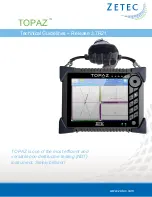
6.1.6.7. Convolution Reverb
The Convolution Reverb finishes out the sound of Solina V by placing it in an artificial space,
whose dimensions dictate how the sound dies away. Unlike an
algorithmic reverb, where
individual parameters like Reverb Time and Room Size are adjusted, a convolution reverb
creates its sound from a modeled "snapshot" of a space.
Let's say we want to create the sound of a particular concert hall for someone sitting in the
audience listening to someone on stage. We set up a speaker on stage and a microphone in
the audience, and play an
impulse over the speaker: a burst of white noise or a sine wave
sweep. We record the impulse on the mic, and then analyze it to remove the impulse while
leaving the reverb behind.
From now on, any sound we feed into the reverb will sound as if it's being played on that
concert hall stage and heard in the audience. Pretty slick!
These models, called
impulse responses, can be stored and read back by many different
convolution reverb plug-ins. Impulse responses don't have to be created in halls or rooms,
though: they can be recorded in phone booths, stairwells, tunnels, studio echo chambers...
and even by putting an impulse through an algorithmic reverb box or analog plate reverb to
recreate one of its settings.
Solina V provides 24 different convolution reverbs modeled, after the presets of five different
reverb devices, a couple of which are the actual reverb units that were paired with string
machines in the 1970s.
Using the Convolution Reverb couldn't be simpler: you choose a reverb and set its mix with
the
Rev
knob next to the keyboard. There are no other controls; the emphasis here is on
immediacy and musicality.
To select one of the impulse responses, click on the name of the current impulse response
to bring up a menu of all your choices:
Which impulse response is best? That depends entirely on your ears. Try some on your
sound and see which one – small room or large hall, filtered or flat, spring or plate or sci-fi
special effect – is most musical to you.
And that's really the core of Solina V in the end: musicality. Once you've mastered these
features, let your ears be your guide in creating the vintage (and not-so-vintage) string and
bass sounds that best fit your music.
Above all, remember to have fun – and if it sounds good, it
is good!
Arturia - User Manual Solina V - The Advanced Panel
68




































